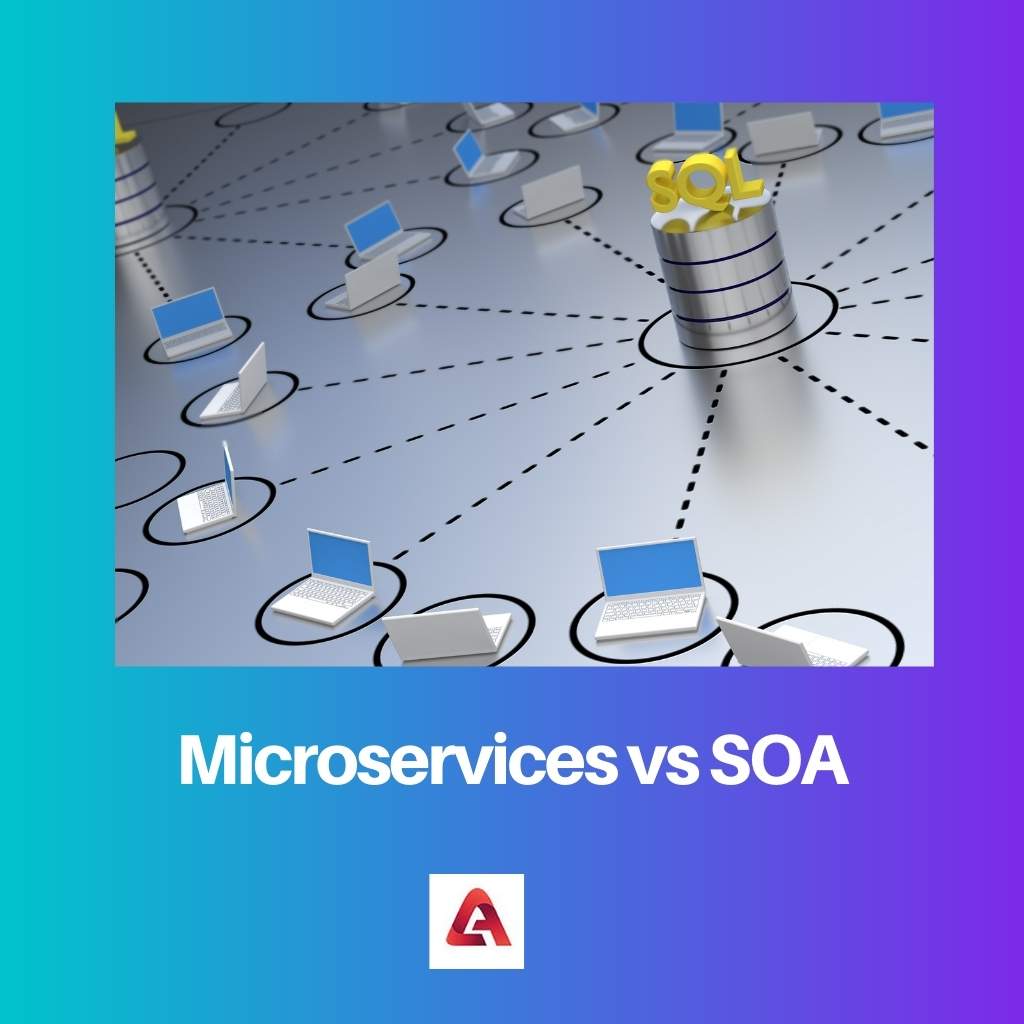Cloud Computing in the IT sector has become one of the fastest-growing technologies which don’t need the user’s participation directly. It is used for storing the data of computer resources, i.e. cloud storage.
If we are talking about the term cloud computing, then Service Oriented architecture, i.e. SOA and Microservices, is something that is known to all. There is a debate going on between the two to prove which is the best method.
Everyone in the modern era is talking about these two terms and their fast applications.
Key Takeaways
- Microservices is an architectural style where software applications are broken down into small, independently deployable services that communicate with each other through APIs.
- SOA (Service-Oriented Architecture) is an architectural style where software applications are designed to provide services to other applications through a network.
- Microservices are simpler and more lightweight than SOA.
Microservices vs SOA
Microservices is an architectural pattern that is used for small groups like web apps, and it can design the host services to work independently. SOA stands for service-oriented architecture and is a method of software development for large-scale integrations. It works by sharing resources across services.

Microservices is one kind of Service-oriented architecture. It forms a small part of SOPA. It arranges the applications in a very loosely coupled system. Services in Microservices are finely grained, and the protocols are very lightweight.
The main aim of Microservices is to provide services to others so that others can work independently. The requirement for communication is very less in Microservices. But the interface needs to be designed with care.
There are various advantages of Microservices. No single definition can be used to define it.
SOA holds an important role in the field of software engineering. It is the type of style that supports the service orientation.
It is applicable in those areas where there is a need for services to other components by application components via the communicational protocol. SOA works independently from technologies, products and vendors.
SOA is a self-contained service that consists of more than one service. SOA breaks the components into small parts so that each service can communicate with another service to meet the objective of the business.
Comparison Table
| Parameters of Comparison | Microservices | SOA |
|---|---|---|
| Data Storage | Independent | Sharing |
| Size | Small | Large |
| Remote services | JMS & REST | AMQP & SOAP |
| Coupling and Cohesion | Bounded context | Sharing resources |
| Component sharing | Doesn’t supports | Supports |
| Governance | Collaboration | Common protocols |
| Communication | API layer | ESB layer |
What are Microservices?
Microservices is an advanced version of SOA as it is evolved from it and is a type or variant of SOA. Unlike SOA, its services are independent and finely grained.
If any of the application or function fails in Microservices, they will continue to function as it is independent of one another. Each service has its distinctive purpose.
The communication used in the Microservices is via API, i.e. Application Programming Interface. They are organized in a particular domain of the business. Together, all these services constitute form very complex applications.
In the application building and deployment process, Microservices is way much better than other services because of its function to work independently.
Because of these characteristics, it has more capability to tolerate more failures than other approaches or services. At times, Microservices are operated via containers. They are made frequently and then deployed in the cloud services.
Microservices are more focused on decoupling. They are more fully stacked than SOA. The stacking of microservices can be very large. Every service in it has independent storage of data. They don’t involve in the sharing of the components.
At times, it can perform a single business. Its app can contain dozens of services.
What is SOA?
SOA or Service-oriented Architecture is a very traditional style structure made for building applications according to monolithic approaches.
It breaks the components into small parts, and then the services communicate with each other to meet the business’s specific objectives.
Every module in SOA is smaller than the monolithic approach, so it can be deployed to serve other purposes in the enterprise. Although, deployment is not very easy in SOA. It is less flexible.
SOA delivers services via the cloud, and its services include platforms, infrastructure, and applications
The two main roles of SOA are service consumers and service providers. The service consumer layer operates the user interface, while the service provider includes various services.
It delivers four types of services Application Services, Enterprise Services, Infrastructure Services, and functional services. Application services are used to deploy apps and develop them. Enterprise services see the functionality.
Infrastructure services see the security and authentication. Functional services are for business operations.
SOA uses the communication layer of ESB, i.e. enterprise service bus, for coordinating and controlling these services. It supports multiple protocols at times. It is focused on maximizing the application service and using it for reuse.
It is designed in a way to share its services with others. It involves data storage sharing between services.
Main Differences Between Microservices and SOA
- Microservices as independent data storage. While SOA shares the data between the services.
- Microservices are good for small applications. While SOA is good for large-scale applications.
- Microservices use protocols like JMS & REST for remote services. SOA uses protocols like AMQP & SOAP for remote services.
- Microservices rely on bounded context for coupling. SOA relies on sharing resources.
- Microservices don’t involve sharing the component. SOA involves sharing the components.
- Microservices require collaboration between various teams. SOA requires common protocols across the teams.
- Microservices communicate via the API layer. SOA communicates via the ESB layer.


